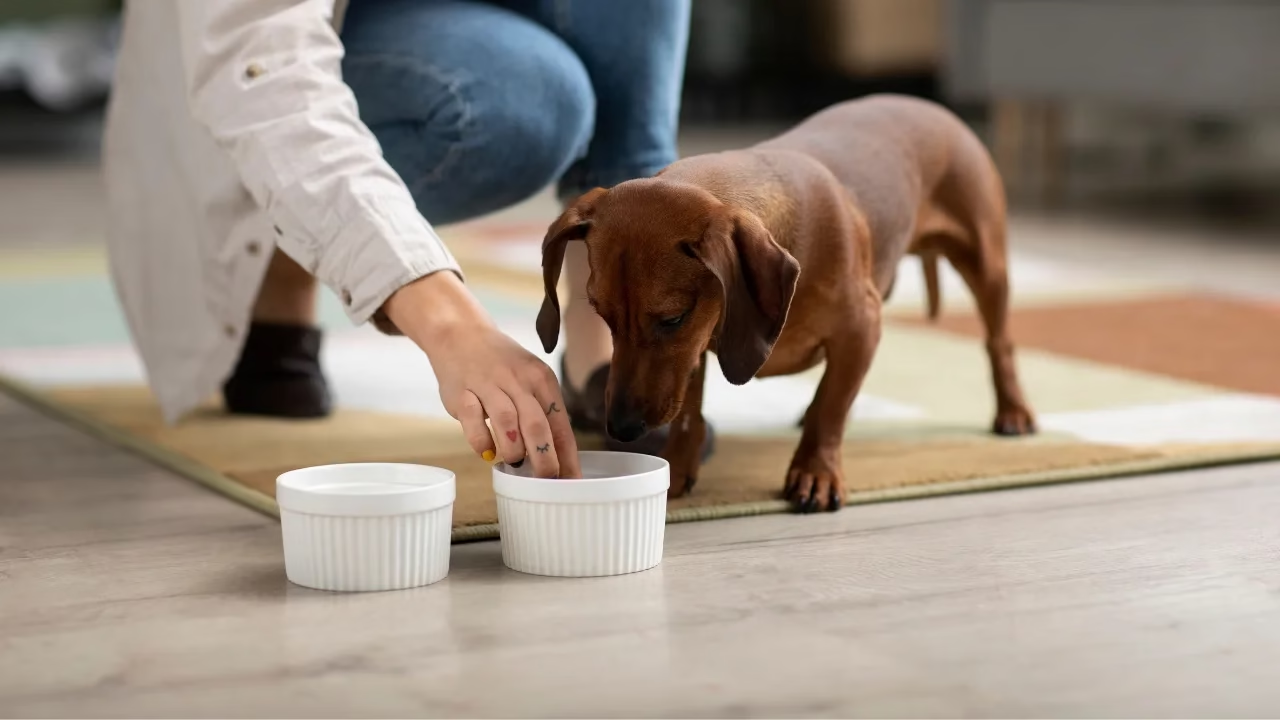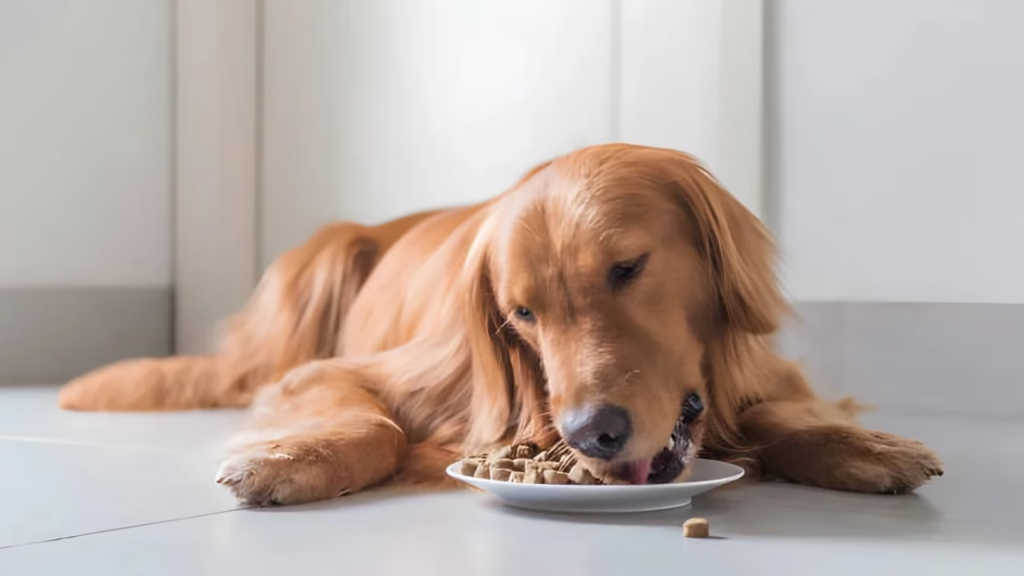Dogs are loyal family members, and feeding them homemade meals can be a rewarding way to ensure they get fresh, wholesome nutrition. In 2025, homemade dog food recipes are trending among pet lovers who want to avoid preservatives and tailor diets to their pup’s needs. Whether your dog has allergies, is a picky eater, or just deserves a treat, these recipes offer balanced, vet-approved options. This guide covers nutritional basics, easy dog food recipes, feeding tips, FAQs, and actionable advice for success with homemade recipes for dogs. Let’s get cooking and make meals your dog will adore!
Nutritional Needs for Homemade Dog Food
Dogs are omnivores with a carnivorous lean, so homemade dog food recipes should prioritize high-quality protein—25-30% of the diet—from sources like chicken, beef, or turkey for muscle maintenance and energy. Fats, 10-15%, from fish oil or chicken fat, support coat health and nutrient absorption. Omega-3 fatty acids are key for reducing inflammation, especially in active or senior dogs.
Carbohydrates from veggies like sweet potatoes or brown rice (20-30%) provide fiber for digestion and energy without spiking blood sugar. Include small amounts of fruits like blueberries for antioxidants. Essential nutrients include calcium (for bones), phosphorus, vitamins A and E, and taurine for heart health—though dogs produce taurine, supplements can help certain breeds. Puppies need higher calories (1,000-1,500 daily), adults 800-1,200 based on size, and seniors lower with joint support like glucosamine.
Consult a vet before starting homemade recipes for dogs to ensure balance—use AAFCO guidelines and add a canine multivitamin if needed. Portion control is crucial to prevent obesity, and always cook meats fully to avoid bacteria. With these foundations, your dog’s homemade diet can boost health and happiness.
Top Homemade Dog Food Recipes for 2025
These dog food recipes are simple, use everyday ingredients, and focus on balance. Each serves a medium-sized dog (around 40-60 lbs) for about 4 meals—adjust portions accordingly. Always vet-check for your dog’s needs.
- Chicken and Rice Comfort Bowl
A gentle, digestible recipe ideal for sensitive stomachs.
Ingredients (makes ~4 servings):
- 1 lb boneless chicken thighs (cooked, shredded)
- 1 cup cooked brown rice
- 1/2 cup carrots (steamed, chopped)
- 1/4 cup peas (steamed)
- 1 tbsp fish oil
- 1/2 tsp calcium powder (vet-approved)
Instructions:
- Cook chicken thoroughly, shred, and cool.
- Mix with rice, veggies, fish oil, and calcium.
- Blend lightly if your dog prefers a softer texture.
- Serve 1-1.5 cups per meal for a 50-lb dog.
Pros: Easy on digestion, budget-friendly, and great for allergies (grain-inclusive but customizable).
Cons: May need added supplements for complete nutrition; rice can be bland without toppers.
Storage: Refrigerate for up to 3 days or freeze in portions for 1 month. - Beef and Sweet Potato Stew
A hearty, protein-packed meal for active dogs.
Ingredients (makes ~4 servings):
- 1 lb lean ground beef (cooked, drained)
- 1 cup mashed sweet potato (no additives)
- 1/2 cup spinach (steamed, chopped)
- 1/4 cup blueberries (fresh or frozen)
- 1 tbsp olive oil
- 1/2 tsp calcium powder
Instructions:
- Brown beef fully, drain fat, and cool.
- Combine with sweet potato, spinach, blueberries, oil, and calcium.
- Simmer briefly for a stew-like consistency.
- Portion 1-1.5 cups per meal for a 50-lb dog.
Pros: Antioxidant-rich, supports joint health, and appealing flavor for picky eaters.
Cons: Beef is richer in fat; not ideal for overweight dogs without adjustments.
Storage: Refrigerate for 3 days or freeze for 1 month. - Turkey and Veggie Medley
A lean option with veggies for fiber and hydration.
Ingredients (makes ~4 servings):
- 1 lb ground turkey (cooked)
- 1/2 cup zucchini (steamed, chopped)
- 1/2 cup pumpkin puree (canned, plain)
- 1/4 cup oats (cooked)
- 1 tbsp fish oil
- 1/2 tsp calcium powder
Instructions:
- Cook turkey completely and cool.
- Mix with zucchini, pumpkin, oats, oil, and calcium.
- Serve chunky or mashed, 1-1.5 cups per meal for a 50-lb dog.
Pros: Low-calorie for weight management, aids digestion, and grain-free if oats are omitted.
Cons: Oats may not suit grain-sensitive dogs; requires thorough mixing.
Storage: Refrigerate for 3 days or freeze for 1 month. - Salmon and Quinoa Power Mix
Omega-boosted for skin and coat shine.
Ingredients (makes ~4 servings):
- 1 lb salmon (cooked, deboned, flaked)
- 1 cup cooked quinoa
- 1/2 cup broccoli (steamed, chopped)
- 1/4 cup apples (diced, no seeds)
- 1 tbsp coconut oil
- 1/2 tsp calcium powder
Instructions:
- Bake or steam salmon, remove bones, and flake.
- Blend with quinoa, broccoli, apples, oil, and calcium.
- Divide into 1-1.5 cup portions for a 50-lb dog.
Pros: High in omega-3s, great for allergies, and provides natural sweetness.
Cons: Salmon can be expensive; strong scent during prep.
Storage: Refrigerate for 3 days or freeze for 1 month.
These homemade recipes for dogs are customizable and fun to prepare, but supplement as needed for full nutrition.
Feeding Guide for Homemade Dog Food
A routine feeding schedule helps maintain weight and energy. Adjust based on breed, age, and activity—consult your vet. Portions are estimates for a 50-lb adult dog.
- Puppies (8-12 Weeks): Feed 3-4 small meals daily, 1-2 cups total of puppy-adapted recipes (higher protein, softer).
- Puppies (3-6 Months): Continue 3 meals, 2-3 cups daily. Focus on growth nutrients like calcium.
- Adolescents (6-12 Months): Switch to 2-3 meals, 2.5-3.5 cups daily. Monitor for overgrowth in large breeds.
- Adults (1-7 Years): Two meals, 2-4 cups daily depending on activity. Active dogs need more; sedentary less.
- Seniors (8+ Years): Two meals, 1.5-3 cups with added glucosamine. Softer textures for easier chewing.
Avoid free-feeding to prevent spoilage and overeating. Provide fresh water, transition slowly over 7-10 days, and watch for allergies or digestive changes.
FAQs About Homemade Dog Food Recipes
Pet lovers often ask about dog food recipes—here are quick answers.
- Is homemade dog food better than commercial?
It can be, with fresh ingredients and no fillers, but requires balancing nutrients. Vet guidance prevents deficiencies. - Can I use raw meat in dog food recipes?
Raw diets are popular but risky for bacteria. Cooked is safer unless following vet-approved raw protocols. - How do I balance nutrients in homemade recipes?
Use protein, fats, carbs, and supplements like calcium and multivitamins. Tools like balance calculators or vet recipes help. - What human foods should I avoid?
Skip chocolate, grapes, onions, garlic, and xylitol—they’re toxic. Stick to dog-safe veggies and lean meats. - How long does homemade dog food last?
Refrigerate for 3 days or freeze for 1 month. Thaw in the fridge and never refreeze.
Conclusion: Actionable Tips for Homemade Dog Food Success
Whipping up homemade dog food recipes your dog will love is a fantastic way to bond and promote health. Try Chicken and Rice Comfort Bowl or Salmon and Quinoa Power Mix for variety and nutrition. With vet approval, homemade recipes for dogs can address specific needs like allergies or weight control.
Actionable tips: Get a vet’s recipe approval first; use a food scale for accuracy; source organic ingredients when possible; rotate proteins to prevent boredom; and track your dog’s weight and energy monthly. Store safely and experiment with add-ins like yogurt for probiotics. Start with one recipe today—your pup’s tail-wagging enthusiasm will be the best reward!


